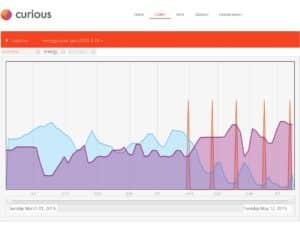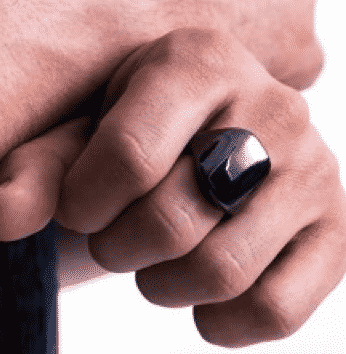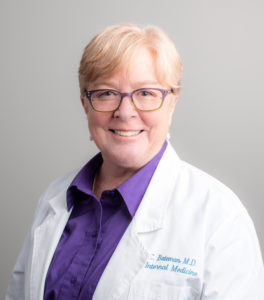Each of us is a 24/7 data-generating machine. Wearable accessories and devices count our steps, monitor our heart and breathing rate and track our water intake. Our smart phones keep us connected all while tracking our every movement. We use apps to count calories, track symptoms, figure out what is making us sick, and get advice on how to get healthy. We have direct-to-consumer tests that tell us about our genetics, our microbiome, and our metabolism. Now each and every one of us has the opportunity for data-driven discovery.
Imagine every ME/CFS and Fibromyalgia patient armed with the technology to generate data that has the potential to provide answers that for far too long has eluded science and medicine. Imagine thousands of patients generating the data that helps find patterns in sleep, cognition and the autonomic nervous system that help us understand what is causing brain fog, pain and post-exertional malaise.
[mailmunch-form id=”200855″]
Actually what I describe above is now reality. The Bateman Horne Center has partnered with Linda Avey, CEO and co-founder of We Are Curious and 23andMe and a Finnish technology company maker of the Ōura ring, to find the physiological abnormalities to help explain why sleep is unrefreshing, pain is widespread, concentration is impaired and energy stores are depleted. Crazy right? Not when we empower thousands of patients with the tools and technology needed to generate real-time and real life data. Here’s how it works.
Curious is an app designed to track data, chart experiences and help you find meaning in your data.  Over the years I’ve tried out many of these tracking apps but gave up because I was limited to tracking just a handful of things. Curious is designed to track anything you want – what you eat, the weather, medications, activity, mood, – anything. And all of these things can be dropped and dragged onto a pre-made graph that looks like a calendar. Patterns emerge from the things you track. Here’s an example of patterns discovered by a patient who tracked when she started Hizentra (subcutaneous immunoglobulin) shown by the red spikes on the graph, her energy increased (shown in purple) and her joint pain decreased (shown in blue).
Over the years I’ve tried out many of these tracking apps but gave up because I was limited to tracking just a handful of things. Curious is designed to track anything you want – what you eat, the weather, medications, activity, mood, – anything. And all of these things can be dropped and dragged onto a pre-made graph that looks like a calendar. Patterns emerge from the things you track. Here’s an example of patterns discovered by a patient who tracked when she started Hizentra (subcutaneous immunoglobulin) shown by the red spikes on the graph, her energy increased (shown in purple) and her joint pain decreased (shown in blue).
Curious has partnered with Ōura to combine sleep data collected by the ring with other things that can be tracked on Curious. This is perfect timing for the Bateman Horne Center because we are conducting research on ways to objectively measure the diagnostic criteria recommended by the Institute of Medicine – unrefreshing sleep, post-exertional malaise, functional impairment, cognitive impairment and orthostatic intolerance.
Ōura is a ring-sized computer designed to assess sleep. It measures total sleep time and amount of deep and REM sleep each night and during the day it measures energy expenditure and activity. The ring uses these parameters to learn about your sleep and your body and then it helps guide the ring wearer towards better sleep and performance.
The Ōura ring was not designed with ME/CFS in mind (or for any disease). This is why twenty ME/CFS patients will beta test the Ōura ring in partnership with the Bateman Horne Center, Curious and Ōura. Cari Allshouse will lead and coordinate the beta testing of the Ōura ring and Curious. Cari is the perfect person for this patient-driven research; she is young and tech savvy. She’s also sick with ME/CFS and uses her disease to her advantage in designing this study.
“I’ve battled severe ME/CFS since I was a little kid. I’ve seen and experienced first hand how most of us are left out of research studies because we are too sick, can’t go off existing meds or we don’t fit strict study criteria. What if we can get data on all patients, across the spectrum, that relate to sleep, pain, exhaustion – what could we learn? Existing data tracking platforms are too time consuming and confusing. Curious and the Ōura ring will change that. I finally feel like we will find some real answers not possible otherwise – without losing my mind in the tracking fog.” says Cari.
Cari is excited about our team. “Having the opportunity to work with Drs. Bateman and Vernon, Linda Avey and Ōura is a dream come true for me. But the most important team members are the 20 people that have graciously agreed to be our beta testers. I am humbled every day by the hope and empowerment they mention in their messages, giving patients the tools to help crack their own mysteries, as well as the bigger picture; is a gift to be apart of.”
The beta test team is calling the study Ring M.E. Cari interacts with the Ring M.E. beta test team on a regular basis by email, instant message, phone and video chat. She’s produced a video to help the beta testers with selecting the right ring size. Cari has also started using Curious (and she loves it!). When the beta test starts Cari will be an expert on Curious and the Ōura ring to help ensure success of this study.
The Ōura rings are being shipped and Cari is busy working with our 20 beta testers to design the study. Beta testers will wear the Ōura ring for 2-4 weeks. The data from the ring together with the other things they track will be collected, aggregated and analyzed on Curious. This will tell us what – if anything – needs to be tweaked for Ōura ring to be used for ME/CFS research. Then we are ready for many more patients to wear the Ōura ring.
Imagine thousands of ME/CFS patients wearing the Ōura ring and tracking other important things to get to the bottom of unrefreshing sleep.
We don’t have to imagine any longer – now we can conduct research in our sleep.


 Lucinda Bateman, MD, is a renowned clinician, researcher, and educator. Her Johns Hopkins University Medical School training instilled an approach to care that she has employed throughout her career - the patient comes first and the unknown or unexplained does not equate to a lack of proper and compassionate care. Since starting her own practice in 2000, she has served on six boards or committees, been the principal investigator for 45 studies, authored/coauthored 40 journal articles, served as adjunct instructor and adjunct assistant professor in the University of Utah Departments of Preventative Medicine, Internal Medicine, and Anesthesiology, and lectured around the world.
Lucinda Bateman, MD, is a renowned clinician, researcher, and educator. Her Johns Hopkins University Medical School training instilled an approach to care that she has employed throughout her career - the patient comes first and the unknown or unexplained does not equate to a lack of proper and compassionate care. Since starting her own practice in 2000, she has served on six boards or committees, been the principal investigator for 45 studies, authored/coauthored 40 journal articles, served as adjunct instructor and adjunct assistant professor in the University of Utah Departments of Preventative Medicine, Internal Medicine, and Anesthesiology, and lectured around the world.